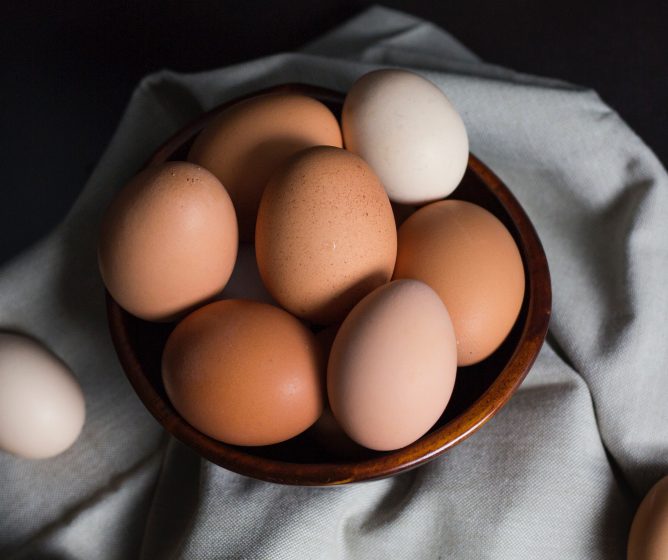
Eggs are a staple in the American kitchen. They can be cooked alone: boiled, poached, fried, scrambled. They can be used in baking, for things like batters and cakes. Alternatively, you can use eggs to thicken sauces or to lighten and fluff up dishes.
But how much do you actually know about eggs? Chances are, you’ve never given it much thought.
Oddly enough, the most critical aspect of the egg is its air content.
When first laid, the egg has barely any air inside a tiny air pocket. However, because the shell is porous, it allows air to penetrate. And as time passes, air moves inside the egg and the air pocket grows.
As this air pocket enlarges, the moisture in the egg evaporates. So as the egg gets older the yolk becomes less plump and flatter and the white separates and spreads.
The freshness and amount of air inside the shell is really important when you’re cooking. Some recipes are best when you use the freshest eggs possible, while others work better when the eggs are a little older.
If you’re frying up eggs for breakfast, a fresh egg will come out neat and rounded while an older one will flatten out like a pancake.
Stale eggs are also more fragile and more difficult to separate.
Fresh eggs have a tough, tight inner skin. This makes peeling the shell off the boiled egg extremely difficult. As the egg ages, the skin relaxes, allowing the shell to peel much easier.
Do you find your eggs crack when boiling? Follow these simple steps to get perfect eggs every time.
Use two week-old eggs and ensure they’re at room temperature. Make a pin prick in the rounded flat end of the egg – this allows any steam that might build up to escape.
Use as small a saucepan as possible so the eggs fit in snuggly – if they have too much space, they can bounce around and crack. Bring the water to the boil, but only simmer; do not boil vigorously.
If you are lucky enough to have your own hens, then you know how old your eggs are. But what if you have to buy them? The easiest method to determine the age of your eggs is to place them (one at a time) in a dish of water.
- If the egg sinks and lies horizontally, it’s very fresh.
- If it sinks but tilts slightly, it’s about one week old.
- If it sinks but stands vertically, it older/maybe stale.
- If it floats, it’s spoiled. Be careful not to crack the shell.
Two other points to note: Nutritionally, brown and white eggs are the same. The color of the yolks will vary depending of the diet of the hen, this shouldn’t worry you as long as the color is a normal shade. If the color is abnormal at all, throw it out.
So to sum it all up: for frying and poaching, use as fresh an egg as possible. When the recipe calls for eggs to be separated, use fresh eggs as well. But if you want easy-to-peel eggs, use the older ones. And when it comes to scrambling, fresh is best but older ones will do.

